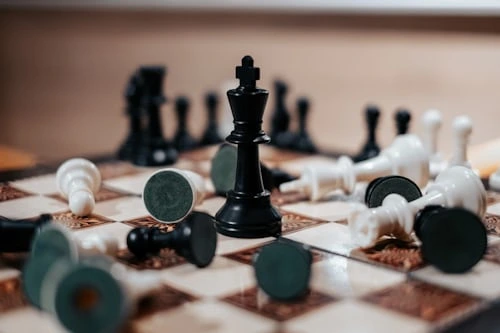
Best Opening for Black
Chess is a game of strategy, patience, and foresight, where the opening moves set the stage for the entire game. For players controlling the black pieces, finding a reliable and effective opening can be challenging, as Black responds to White’s first move and must equalize the position before aiming for an advantage.
The question of the “best” opening for Black is subjective, as it depends on a player’s style, skill level, and goals. However, certain openings stand out for their solidity, flexibility, and ability to create counterattacking opportunities. In this blog, we’ll explore some of the best chess openings for Black, focusing on their principles, key variations, and suitability for different levels of players.
Why Choosing a Good Opening for Black Matters
White has the first-move advantage in chess, which allows them to dictate the initial direction of the game. Black’s task is to neutralize this advantage, establish a solid position, and create opportunities for counterplay. A good opening for Black should:
- Equalize the position: Counter White’s central control and develop pieces harmoniously.
- Be flexible: Allow Black to adapt to White’s setup, whether aggressive or positional.
- Suit the player’s style: Align with whether the player prefers solid, defensive play or sharp, tactical battles.
- Be accessible: Work for players of varying skill levels, from beginners to advanced competitors.
Based on these criteria, three openings stand out as some of the best for Black: the Sicilian Defense, the French Defense, and the Caro-Kann Defense. We’ll also briefly discuss the Indian Systems (like the Nimzo-Indian and King’s Indian) for players facing 1.d4. Each opening has unique characteristics, making them suitable for different scenarios and player preferences.
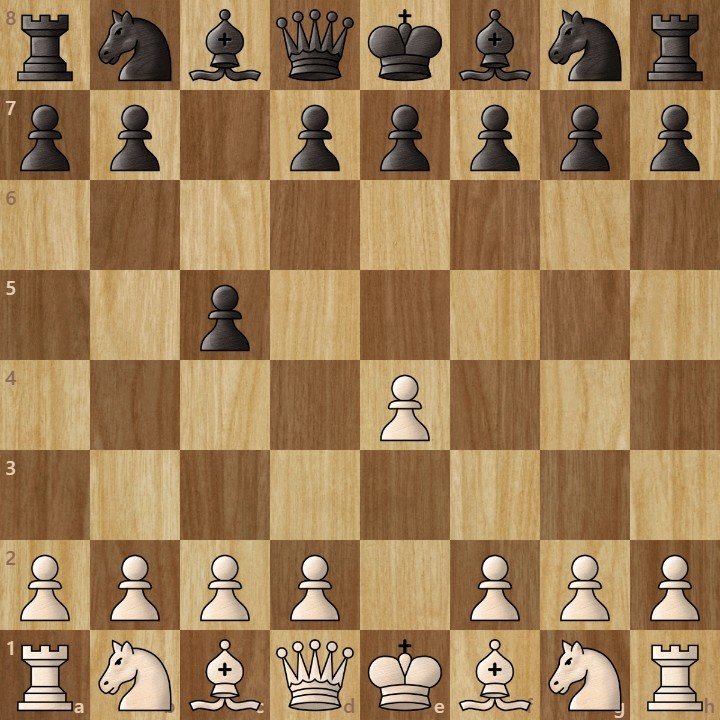
1. The Sicilian Defense (1.e4 c5)
The Sicilian Defense is one of the most popular and dynamic openings for Black, played at all levels, from club games to world championships. By responding to 1.e4 with 1…c5, Black immediately challenges White’s central pawn and aims for an asymmetrical pawn structure, leading to rich, tactical positions.
Why Choose Sicilian Defense?
- Counterattacking Potential: The Sicilian often leads to unbalanced positions where Black can fight for the initiative, especially in open variations.
- Flexibility: It offers multiple variations (e.g., Najdorf, Dragon, Moscow) to suit different playing styles.
- Popularity at High Levels: Top players like Garry Kasparov and Magnus Carlsen have used the Sicilian to great effect, showcasing its reliability.
Key Variations
- Najdorf Sicilian (1.e4 c5 2.Nf3 d6 3.d4 cxd4 4.Nxd4 Nf6 5.Nc3 a6): The Najdorf is a favorite for ambitious players. The move 5…a6 prepares …b5 and supports flexible development. It’s complex and requires study but offers dynamic chances. White can respond with moves like 6.Bg5 (sharp) or 6.Be2 (positional), and Black must be ready for both.
- Dragon Sicilian (1.e4 c5 2.Nf3 d6 3.d4 cxd4 4.Nxd4 Nf6 5.Nc3 g6): Known for its fiery attacking chances, the Dragon features a fianchettoed bishop on g7. Black aims for rapid kingside play, but White’s Yugoslav Attack (with h4-h5 and opposite-side castling) can be dangerous, requiring precise defense.
- Moscow Variation (1.e4 c5 2.Nf3 d6 3.Bb5+): A quieter option, this avoids heavy theory. Black can respond with 3…Bd7 or 3…Nd7, aiming for a solid structure.
Pros and Cons
- Pros: Offers winning chances even as Black, with sharp tactical possibilities. Highly flexible with many variations to explore.
- Cons: Requires significant memorization, especially in the Najdorf and Dragon. Mistakes can lead to quick losses against prepared opponents.
- Best For: Intermediate to advanced players who enjoy tactical, aggressive games.
Practical Tips
- Study key lines, especially White’s common responses like the Open Sicilian (2.Nf3 and 3.d4).
- Practice the pawn structures (e.g., open center, d6-e6 vs. d4-e4) to understand middlegame plans.
- Be cautious of White’s early attacks, like the Keres Attack (6.g4 in the Scheveningen).
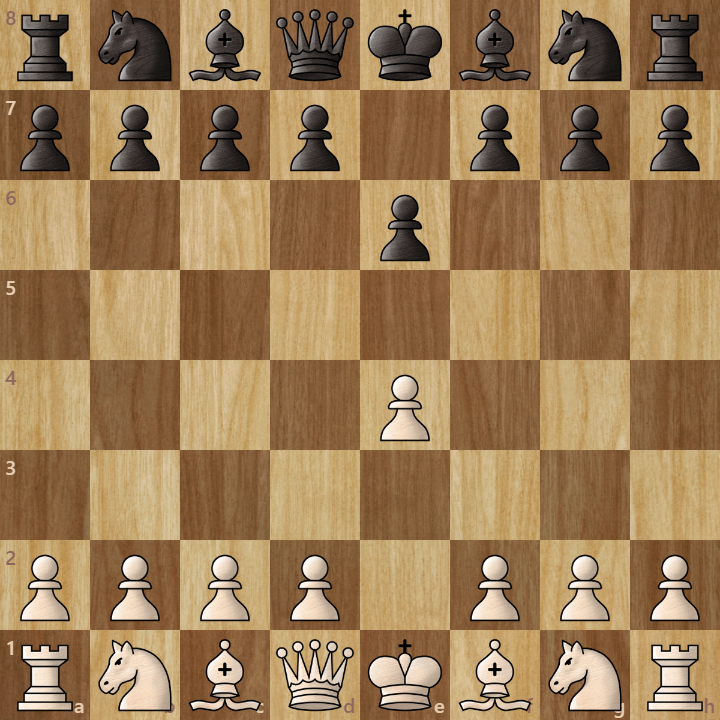
2. The French Defense (1.e4 e6)
The French Defense, initiated by 1.e4 e6, is a solid and reliable choice for Black. It aims to challenge White’s center with 2…d5, often leading to closed or semi-open positions where Black can counterattack later.
Why Choose the French Defense?
- Solidity: The French creates a strong pawn chain (e6-d5), making it hard for White to break through.
- Counterattacking Opportunities: Black often targets White’s overextended center or weak pawns (e.g., d4 in the Advance Variation).
- Less Theory-Intensive: Compared to the Sicilian, the French requires less memorization, making it accessible for beginners.
Key Variations
- Advance Variation (1.e4 e6 2.d4 d5 3.e5): White locks the center, and Black counters with …c5, attacking the d4-pawn. Moves like …Nc6 and …Qb6 add pressure, while Black’s light-squared bishop can be a challenge to activate.
- Exchange Variation (1.e4 e6 2.d4 d5 3.exd5 exd5): This leads to symmetrical, drawish positions, but Black can play for subtle imbalances (e.g., with …c5 or …Nf6).
- Winawer Variation (1.e4 e6 2.d4 d5 3.Nc3 Bb4): A sharp choice, pinning the knight and aiming for rapid development. It’s complex but rewarding for tactical players.
Pros and Cons
- Pros: Solid structure, fewer forced lines, and good counterattacking chances. Ideal for positional players.
- Cons: The light-squared bishop on c8 can be “bad” (blocked by e6-d5). Some lines feel passive if Black doesn’t counterattack effectively.
- Best For: Beginners to intermediate players who prefer solid, strategic play over sharp tactics.
Practical Tips
- Focus on breaking White’s center with …c5 and …f6 (in the Advance Variation).
- Develop pieces actively, especially the knight to f6 and bishop to d6 or e7.
- Be prepared for White’s Tarrasch (3.Nd2) or Classical (3.Nc3) systems, which require different plans.
Free Demo Class for Kids
Let your child explore 60-minute free interactive session with FIDE Rated coaches.
Enroll Here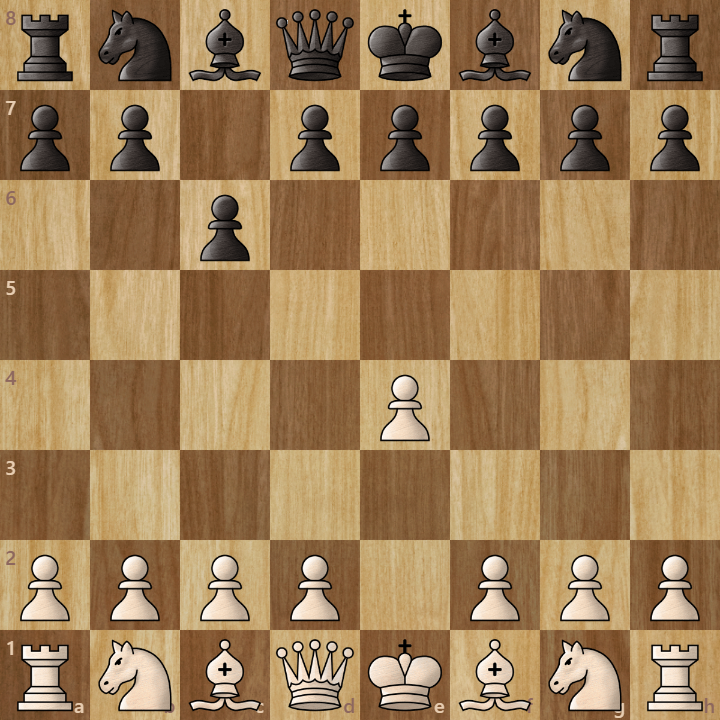
3. The Caro-Kann Defense (1.e4 c6)
The Caro-Kann, starting with 1.e4 c6, is another solid option for Black, aiming to challenge White’s center with 2…d5 while maintaining a flexible pawn structure.
Why Choose the Caro-Kann Defense?
- Solidity with Flexibility: The Caro-Kann combines a robust pawn structure (c6-d5) with active piece play.
- Low Risk: It avoids the sharp tactical battles of the Sicilian, making it easier to learn and play.
- Endgame Strength: The pawn structure often leads to favorable endgames for Black.
Key Variations
- Main Line (1.e4 c6 2.d4 d5 3.Nc3 dxe4 4.Nxe4 Bf5): Black develops the bishop actively, aiming for a balanced position. White’s 5.Ng3 Bg6 is common, and Black continues with …e6 and …Nf6.
- Advance Variation (1.e4 c6 2.d4 d5 3.e5): Black counters with …Bf5, followed by …e6 and …c5, targeting the d4-pawn.
- Panov-Botvinnik Attack (1.e4 c6 2.d4 d5 3.exd5 cxd5 4.c4): This leads to open, dynamic positions resembling the Queen’s Gambit Declined.
Pros and Cons
- Pros: Easy to learn, solid structure, and good endgame prospects. Less risky than the Sicilian.
- Cons: Can feel passive in some lines, with fewer winning chances against cautious opponents.
- Best For: Beginners and intermediate players who want a reliable, low-maintenance opening.
Practical Tips
- Prioritize developing the light-squared bishop before playing …e6 to avoid it being trapped.
- Use …c5 to challenge White’s center in the Advance Variation.
- Study the main line (3.Nc3 or 3.Nd2) to handle White’s most common responses.
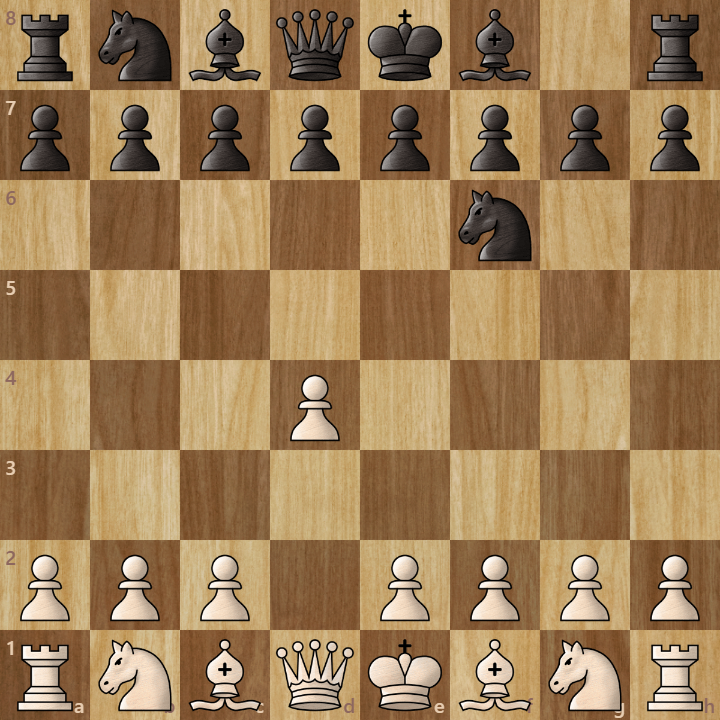
4. Indian Systems for 1.d4 (Nimzo-Indian and King’s Indian)
While the above openings address 1.e4, Black also needs a response to 1.d4. The Nimzo-Indian Defense (1.d4 Nf6 2.c4 e6 3.Nc3 Bb4) and King’s Indian Defense (1.d4 Nf6 2.c4 g6) are excellent choices.
- Nimzo-Indian: By pinning the knight on c3, Black prevents e4 and aims for a flexible, dynamic setup. It’s ideal for positional players who enjoy controlling the center indirectly.
- King’s Indian: Black fianchettoes the bishop to g7 and prepares a kingside attack with …f5. It’s aggressive and suits players who thrive in complex, tactical positions.
Why Choose Indian Systems (Nimzo-Indian and King’s Indian)?
- Nimzo-Indian: Offers control over e4 and flexible pawn structures. It’s a favorite of players like Viswanathan Anand.
- King’s Indian: Leads to rich, attacking games, as seen in games by Garry Kasparov. It’s riskier but rewarding.
Practical Tips
- In the Nimzo-Indian, focus on the pin and doubling White’s c-pawns with …Bxc3.
- In the King’s Indian, prepare …f5 carefully, ensuring your king is safe (usually castled kingside).
Choosing the Right Opening for You
The “best” opening for Black depends on your style and experience:
- Beginners: The Caro-Kann or French Defense is ideal due to their simplicity and solidity.
- Intermediate Players: The Sicilian (Moscow or Dragon) or Nimzo-Indian offers a balance of learning and winning chances.
- Advanced Players: The Najdorf Sicilian or King’s Indian provides complex, dynamic positions for outplaying opponents.
Conclusion
The Sicilian Defense, French Defense, Caro-Kann Defense, and Indian Systems are among the best openings for Black, each offering unique strengths. The Sicilian is perfect for tactical players seeking counterattacking chances, the French suits those who prefer solid, strategic play, and the Caro-Kann is ideal for beginners wanting a reliable setup. Against 1.d4, the Nimzo-Indian and King’s Indian provide flexibility and aggression.
By studying these openings, understanding their pawn structures, and practicing key lines, you can confidently respond to White’s first move and steer the game toward positions that suit your style. Whether you’re a beginner or a seasoned player, mastering one of these openings will enhance your chess and make playing Black a rewarding experience.
Remember: Every grandmaster was once a beginner who refused to give up. Start today — your next move could be your best one yet.
Free Demo Class for Kids
Let your child explore 60-minute free interactive session with FIDE Rated coaches.
Enroll HereFrequently Asked Questions
While win rates can vary depending on player level and database size, some openings consistently perform well for Black. According to statistics from top chess databases and master-level games, the Sicilian Defense (1.e4 c5) tends to have one of the highest win rates for Black. It creates dynamic, counterattacking positions and offers multiple strong variations like the Najdorf, Dragon, and Scheveningen.
For players preferring solid and positional setups, the French Defense (1.e4 e6) and Caro-Kann Defense (1.e4 c6) also show excellent results with strong drawing chances and counterplay opportunities. Against 1.d4, the Nimzo-Indian Defense and King’s Indian Defense are statistically reliable and lead to rich middlegame positions.
Yes, the Caro-Kann Defense (1.e4 c6) is an excellent opening for Black. It’s known for its solidity, strong pawn structure, and long-term strategic potential. Unlike sharper defenses such as the Sicilian, the Caro-Kann allows Black to develop safely while maintaining a resilient position against White’s attack.
Play counter-attacking defenses like the Sicilian Defense or Caro-Kann Defense. Focus on controlling the center and using pawn breaks to create space.
Magnus Carlsen doesn’t rely on just one opening for Black — he’s known for his versatility and deep understanding of many systems. However, throughout his career, Carlsen has frequently used and achieved great success with the Sicilian Defense, Caro-Kann Defense, and Berlin Defense (from the Ruy Lopez).
Several openings allow Black to play aggressively and fight for the initiative right from the start. Some of the most popular aggressive openings include:
Sicilian Defense (1.e4 c5): Especially sharp variations like the Najdorf and Dragon, which lead to tactical battles and attacking chances.
King’s Indian Defense (against 1.d4): Black allows White to build a center, planning a dynamic counterattack on the kingside.
Grünfeld Defense (against 1.d4): Black challenges the center immediately, creating imbalanced positions with attacking opportunities.
Dutch Defense (against 1.d4): Particularly the Leningrad Variation, which leads to aggressive kingside play.
Also Read
- admin2
- Blog
- December 12, 2025
- Comments Off on French Defense
French Defense
- admin2
- Blog
- December 7, 2025
- Comments Off on Sicilian Defense
Sicilian Defense
- admin2
- Blog
- November 28, 2025
- Comments Off on Difference between Stalemate and Checkmate
Difference between Stalemate and Checkmate
- admin2
- Blog
- November 20, 2025
- Comments Off on Ruy Lopez Opening
Ruy Lopez Opening
- admin2
- Blog
- November 14, 2025
- Comments Off on Fool’s Mate
Fool’s Mate
- admin2
- Blog
- November 8, 2025
- Comments Off on Scholar mate
Scholar mate
- admin2
- Blog
- October 22, 2025
- Comments Off on What is a Stalemate ?
What is a Stalemate ?
- admin2
- Blog
- October 14, 2025
- Comments Off on Can a King Checkmate a King ?
Can a King Checkmate a King ?
- admin2
- Blog
- October 7, 2025
- Comments Off on Best Opening For Black
Best Opening For Black
- admin2
- Blog
- October 4, 2025
- Comments Off on How to checkmate with queen and king
How to checkmate with queen and king
- admin2
- Blog
- September 26, 2025
- Comments Off on Online Chess vs Board Chess
Online Chess vs Board Chess
- admin2
- Blog
- September 24, 2025
- Comments Off on How to Checkmate in 4 Moves
How to Checkmate in 4 Moves
- admin2
- Blog
- September 18, 2025
- Comments Off on Benefits of Playing Chess
Benefits of Playing Chess
- admin2
- Blog
- September 8, 2025
- Comments Off on Best Chess Coaching in india
Best Chess Coaching in india
- admin2
- Blog
- August 25, 2025
- Comments Off on Rapid chess vs blitz chess
Rapid chess vs blitz chess
- admin2
- Blog
- August 21, 2025
- Comments Off on Rapid Chess vs Classic Chess
Rapid Chess vs Classic Chess
- admin2
- Blog
- August 12, 2025
- Comments Off on 7 Brain Boosting Benefits Of Chess
7 Brain Boosting Benefits Of Chess
- admin2
- Blog
- August 4, 2025
- Comments Off on Top 10 Chess Openings for Beginners
Top 10 Chess Openings for Beginners
- admin2
- Blog
- July 11, 2025
- Comments Off on Top 10 Reasons Kids Should Learn Chess
Top 10 Reasons Kids Should Learn Chess
- admin2
- Blog
- July 10, 2025
- Comments Off on Inspirational Story Of Indian Chess Grandmaster Gukesh Dommaraju
Inspirational Story Of Indian Chess Grandmaster Gukesh Dommaraju
- admin2
- Blog, Chess Tips
- July 8, 2025
- Comments Off on 7 Brain Benefits Of Playing Chess
7 Brain Benefits Of Playing Chess
- admin2
- Blog, Our blog
- May 13, 2025
- Comments Off on
- admin2
- Blog
- May 7, 2025
- Comments Off on Patterns in Chess
Patterns in Chess
- admin2
- Blog
- May 7, 2025
- Comments Off on Why Venture Chess Academy ?





